Star S0

Star S0

Introduction
Evolution of Density Profile
Zoomed in Evolution
Evolution of Density Profile with Velocity Field
Zoomed in Evolution with Velocity Field
Black Hole and Disk Parameters
Introduction

Fig. 1-1 Initial Shape of the Rotating Star
Evolution is performed on a variable grid, with the grid changing as the characteristic radius of the star changes. This is necessary since the characteristic radius of the star decreases by a factor of almost 103 during the collapse. The grid is initially 400x400 and uniform but ultimately increases to 1400x1400 as collapse proceeds. After collapse, a 600x600 multiple-transition fisheye grid is used. In this simulation, the spin parameter is J/M2 = 0.96, and Req/M = 640. Figure 1.1 shows the initial shape of the star.
Evolution of the Density Profile
In the meridional clip, the density is plotted on a logarithmic scale. The gravitational field is evolved via the BSSN scheme. The MHD equations are solved by a high-resolution shock capturing (HRSC) method.
At t/M=0, the star is rotating near the mass-shedding limit. Rotational to gravitational potential energy is T/|W|=0.009. This case evolves without a magnetic field. The star quickly collapses to a black hole, creating an apparent horizon and surrounding torus. Soon after collapse, a modest outflow develops as material from the outer layers of the star falls in. The outermost material has enough angular momentum that it is prevented from accreting and instead accumulates near the black hole, eventually heating up the inner torus and creating an outward shock along the surface of the torus. Several smaller outflows arise as evolution continues, but eventually most of the material reaches the central area and infalling material does not have enough angular momentum to create further shocks. Soon after the black hole forms, a region within the apparent horizon is excised to allow the computation to continue. The black hole quickly settles down, so we freeze the metric ("Cowling approximation") and allow the torus to evolve until the simulation ends. With no magnetic field, this case reaches a quasi-stationary state soon after the Cowling approximation is activated.
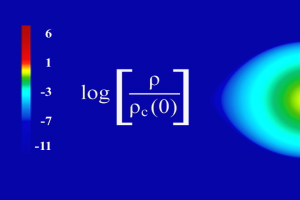 Fig. 2-1 Color code for density profile |
 Fig. 2-2 Density Profile at t = 0 |
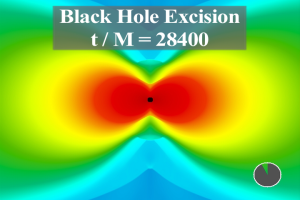 Fig. 2-3 Black hole excision at t/M = 28400 |
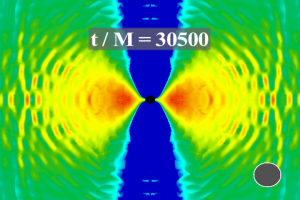 Fig. 2-4 Density Profile at t/M = 30500 |
Zoomed in Evolution
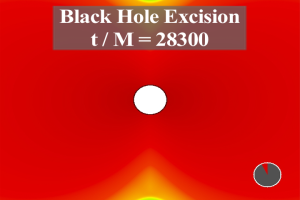 Fig. 3-1 Black hole excision at t/M = 28300 |
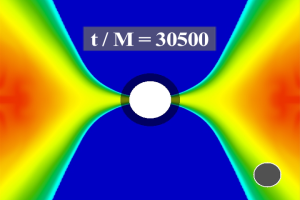 Fig. 3-2 Density profile at t/M = 30500 |
Evolution of Density Profile with Velocity Field
Zoomed in Evolution with Velocity Field
Black Hole and Disk Parameters
The star collapses to form a rotating black hole surrounded by a massive disk. Listed in the table below are significant, nondimensional parameters for the spin of the black hole and disk, and the rest mass of the black hole and disk. These parameters indicate the formation of a substantial disk.
Last Updated 5 Nov 14 by SEC

Fig. 4-1 Color code for density profile

Fig. 4-2 Density Profile at t = 0
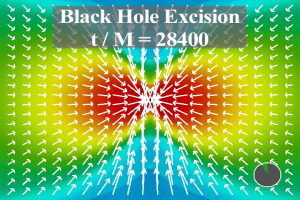
Fig. 4-3 Black hole excision at t/M = 28400
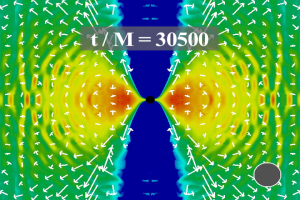
Fig. 4-4 Density Profile at t/M = 30500
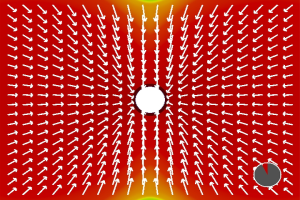
Fig. 5-1 Black hole excision at t/M = 28300
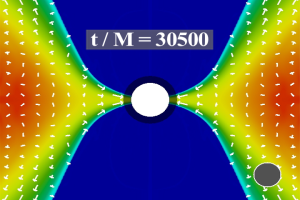
Fig. 5-2 Density profile at t/M = 30500
MBH/M 0.96 MD/M0 0.07 JBH/J 0.67 JBH/M2BH 0.70